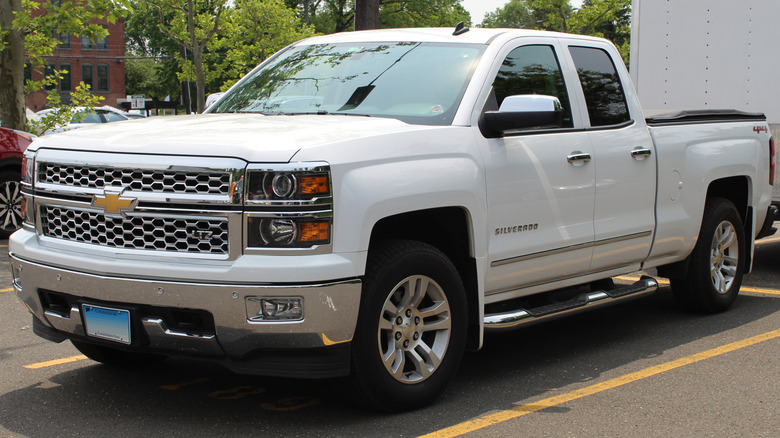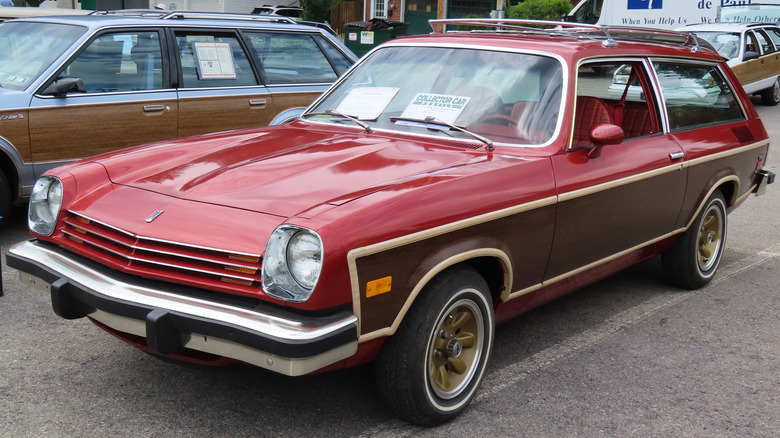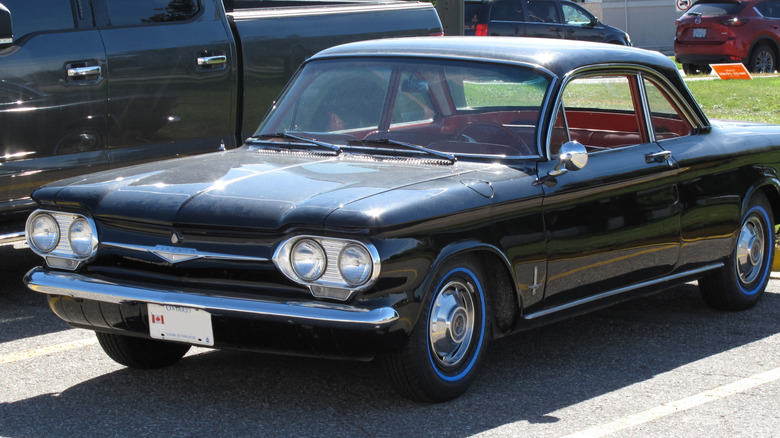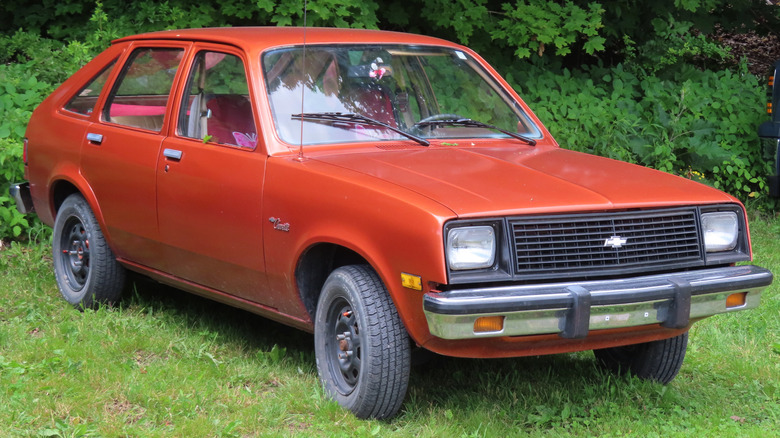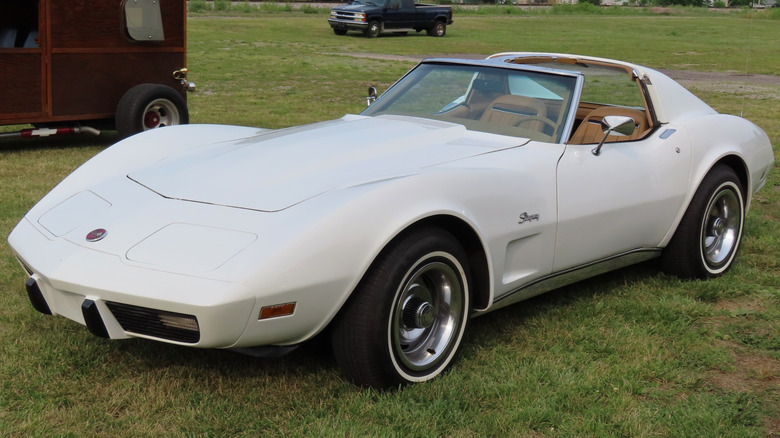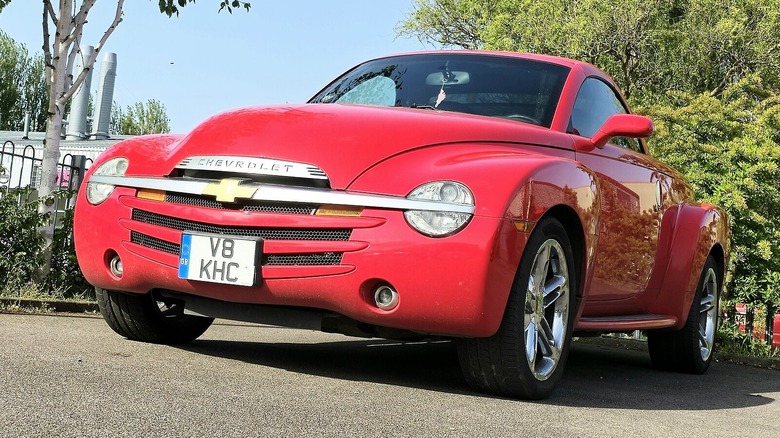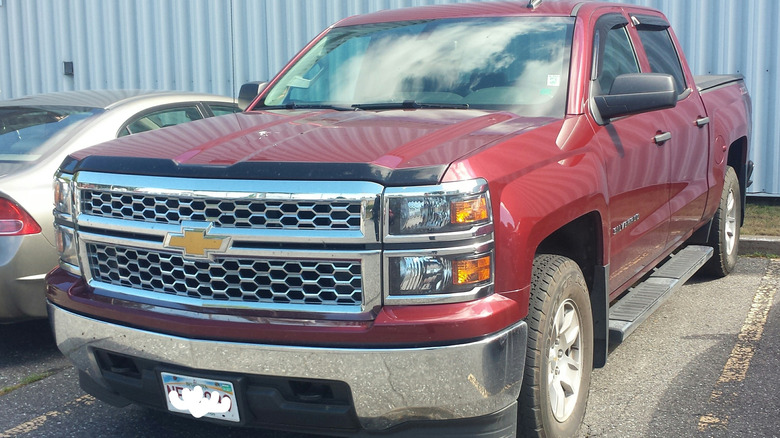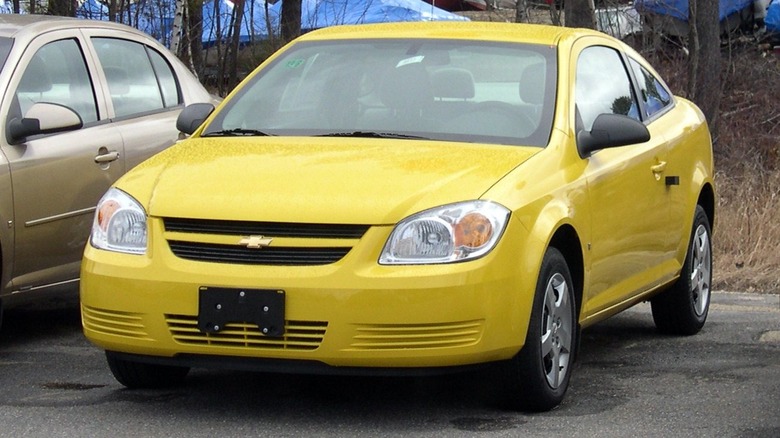7 Of The Most Hated Chevrolet Models Ever Made
Chevrolet is one of the most beloved and successful car brands in American history. In 2024, the Chevrolet Silverado was the second-best selling vehicle in the United States, a position it also held in 2023. From the flash of the Corvette to the utility of the Suburban, Chevy has been able to satisfy customers for decades, and there's no reason to expect that to change any time soon.
Of course, not every vehicle that Chevrolet has produced has been perfect. Far from it, in fact. Despite the brand's popularity, Chevrolet is no stranger to making cars, trucks, and SUVs that do not hold up well over time. This is actually a surprisingly frequent phenomenon for the company.
While Chevrolet has many beloved classics in its catalog, it's had plenty of duds as well. If you're considering a used Chevrolet or just want to look back at the company's history without rose-colored glasses, here are seven Chevy models that have earned more hate than love throughout the years.
Vega
It's common to look back at the Academy Awards with hindsight and think that a given year's Best Picture winner is less than deserving of that award. That doesn't happen that often with cars, but MotorTrend might want to go back to 1971 and change its pick for Car of the Year, since the Vega quickly became an albatross and was discontinued after 1977.
In 1972, Chevrolet recalled a half-million Vegas because of a myriad of issues. There was a design flaw in the rear axle that could cause the wheels to actually fall off the vehicle, and that was just one problem of many. The engine had a tendency to overheat badly enough to warp the cylinders. This would alter the flow of coolant and cause the engine to consume excessive amounts of oil, ultimately causing engine failure. The front fenders of the Vega also rusted quickly because of Chevrolet's cheap move to not install plastic fender liners.
Chevrolet was eventually able to fix all of these issues, but there's no coming back from a reputation for having an engine that melts and wheels that fall off. People stopped buying the Vega, and the former Car of the Year's short run ended in disgrace.
First-generation Corvair
When the Vega was introduced, it was intended to be the replacement for the Corvair. Part of the reason Chevrolet needed to make this change was because the Corvair's reputation went into the ditch pretty quickly. While the Vega had major design flaws and was subject to a substantial number of recalls, the Corvair was at the heart of dozens of legal cases related to its handling. It was built with a swing rear axle that kept the wheels perpendicular to the half-shafts. Because of this design, turning corners could be a bit tricky, particularly for drivers who liked to take them quickly. The Corvair had a tendency to oversteer under such conditions because the edges of the rear wheels would lose contact with the road.
Ralph Nader lambasted the Corvair in his book "Unsafe at Any Speed," arguing that the average driver was not skilled enough to handle its finicky rear end. Professionals on a controlled course could drive it safely, but spirited motoring on public roads was another matter. Consequently, General Motors was subject to around 85 lawsuits related to Corvair crashes from poor handling. Ultimately, the Corvair was not found to be defective, and a community of car enthusiasts have rallied behind the model. However, the damage was done, and sales for the Corvair plummeted. A second generation with a redesigned rear axle couldn't even save it. Nader and his crusade against the Corvair did play an important role in improving vehicle safety, but those welcome changes may have come unjustly at the Corvair's expense.
Chevette
We go from the predecessor to the Chevrolet Vega to its successor. Clearly, this entire lineage of cars is just cursed. For the 1976 model year, we saw the introduction of the Chevette. The Chevette was born in direct response to the oil crisis earlier in the 1970s and the emissions regulations established by the newly formed Environmental Protection Agency. You could argue that Chevrolet overcorrected for the new standards in developing the Chevette, and the result was a car that was doomed from the start.
Chevy was far from the only automaker to have the power of its vehicles reduced by the need to meet these new standards, but the Chevette was a major casualty. Its base engine, a 1.4L inline four-cylinder, could only generate 52 hp. That is only about twice as much power as the current John Deere X500 riding lawnmower. The most power you could get with the '76 Chevette was 60 hp with the slightly larger 1.6-liter I4. That was downright woeful, and the 1977 Chevette took a full 15 seconds to reach 60 miles per hour and topped out at just 81 mph.
Chevrolet barely did anything to the Chevette to improve it over its 10-year run. Its most attractive feature was its rather cheap starting price at a little over $2,500 (equal to about $14,000 in today's money), but unfortunately it also felt cheap.
1975-1976 Corvette
The Chevette was not the only Chevy car to be hampered by the new emissions restrictions put in place by the EPA. These measures also greatly affected the Corvette, one of Chevy's traditionally most powerful models. Starting with the 1975 model year — midway into the model's third generation — Chevrolet needed to replace the popular 350 small block V8 engine that was the base motor for the Corvette as well as its optional 454-inch big block V8. In the 1973 'Vette, the latter engine could generate 275 hp and 390 lb-ft. of torque, while the base 350 still got you a very respectable 190 hp and 300 lb-ft.
The base Corvette engine in 1975 was still a 350 V8, its maximum output was significantly reduced to just 165 hp and 255 lb.-ft. of torque. The 454 V8 option was completely gone as well, so buyers had to settle for the 350. Yes, it was more efficient — and Chevrolet really tried to push this as a plus — but the Corvette was made to go fast, not save money at the gas pump.
The 1976 model year saw the discontinuation of the Corvette as a convertible. So, not only did you have this lackluster powertrain, but you couldn't even have the wind blowing back your hair as you drove. Chevrolet was able to right the ship with the Corvette in the following year — including increasing its power once again — but this two-year stretch for the Corvette left a lot of people wanting.
SSR
While the Silverado pickup truck may be the crown jewel of Chevrolet's lineup today, that doesn't mean that every pickup the company produced was a big-time hit. The 2003 model year saw Chevy release the SSR; a fairly radical reinvention of the pickup truck in terms of design. The Super Sport Roadster tried to blend the size and functionality of a pickup with the style and performance of a sports car. It was initially outfitted with a 5.3-liter V8 engine that could produce up to 300 hp, and a 390-hp, 6.0-liter V8 was introduced for 2005. The hardtop convertible had a bubbly aesthetic that took inspiration from pickups from the 1950s and '60s, but it was given a sporty stance and sleek look those trucks never had.
However, the SSR was not the next big thing. From 2003 through the 2006 model year, the truck sold only around 24,000 units total. Nobody wanted to buy the SSR, even though there were plenty of positive reviews and today you can find plenty of SSR fans online. The fact remains that in its day, people saw the Chevrolet SSR and wanted no part of it. This ultimately led to layoffs and the closure of the plant that produced it, and the Chevrolet SSR went down in history as a failure.
Third-generation Silverado 1500
The Chevrolet Silverado 1500 may be a sales juggernaut, but that doesn't mean it has always been a well-liked and reliable vehicle. In fact, the third-gen Silverado is known for terrible owner satisfaction reviews and thousands of complaints reported by drivers. This generation began with the 2014 model year and lasted through 2018. Over the course of these five years, Chevrolet never got its act together for what is ostensibly now its flagship vehicle.
The first two model years of the third generation were particularly failure-prone. The 2014 Silverado was the subject of 20 different recalls by the NHTSA, and the 2015 version has been recalled 23 times. the next year was a little better, but there were still 13 recalls issued for the Silverado in 2016. This is a big reason why no year of the third-gen Silverado has been able to get above a 2 out of 5 owner satisfaction score or 34 out of 100 reliability rating from Consumer Reports. The 2015 model has the lowest satisfaction score at 1 out of 5, and the 2017 version has the lowest reliability rating at 28. For five straight years, Chevrolet truly mangled the Silverado 1500.
2006 Cobalt
Sometimes publications like Consumer Reports and J.D. Power cannot accurately collect enough data to give a consensus opinion on a particular year of a model. This is often because there aren't enough owners contributing information or the model predates the database. In these cases, the best thing to do is to look at the number of owner complaints. This is how we know that the 2006 Chevrolet Cobalt was a serious problem for a lot of people.
The Cobalt was discontinued by Chevy after 2010 in North America although it was only introduced for the 2005 model year. The NHTSA logged a total of 1,647 complaints from drivers for the inaugural year alone. You would hope that things would get better the following year, but they got worse, as the 2006 model received 2,326 complaints. Over half of these had to do with power steering failure, which was the reason behind one of the vehicle's six different recalls. This was also the main issue with the 2005 model, but the 2006 model had electrical, air bag, and fuel system problems reported by drivers. Chevrolet righted the ship a bit somewhat for the Cobalt's last few years, but it was too little, too late.
